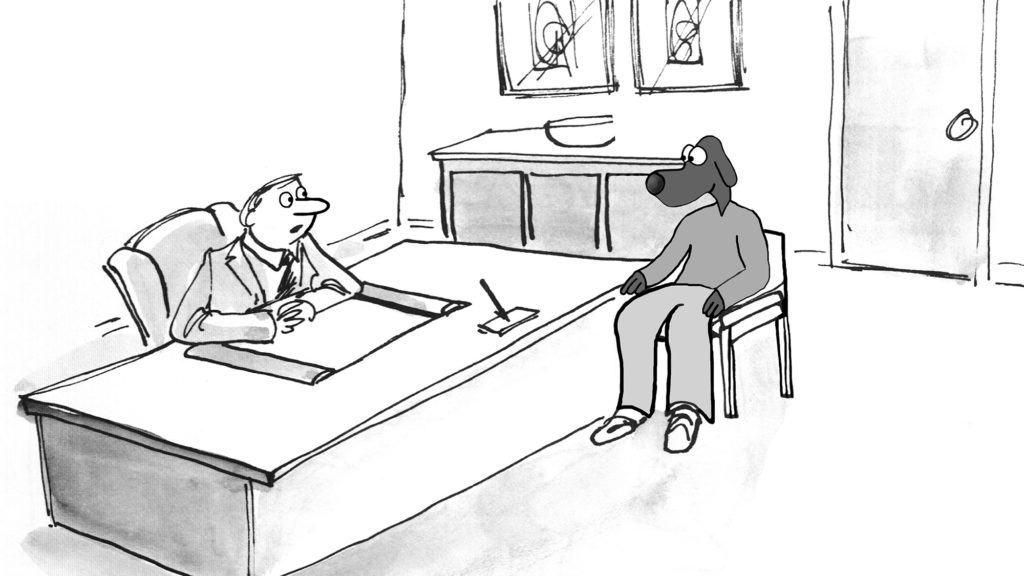How to Avoid Bias in Performance Reviews

Feedback seems like a panacea for personal development and successful change management. And it’s true to some extent: Feedback enables us to improve things, stay motivated and keep our fingers on the pulse. Or should we say: Feedback could allow us to do all that? Because not all feedback is the same, and often, unconscious evaluations ruin the positive effect.
If you like the term “bias,” you can find a nice breakdown of many feedback conversation problems at our colleagues at Culture Amp. If you’ve had enough of it and know your Kahneman inside out by now, maybe the short-and-simple version regarding the most popular feedback mistakes (and how to avoid them) is enough for you.
1. Time Issues
Remember that meeting eight months ago when you gave a great presentation to Team X on Topic Y? No. Unfortunately, your supervisor often doesn’t either.

5 smart tips to help you excel at remote performance management
Fast Company Read SummaryBecause in the stress of preparing for a performance review, it’s easy to forget to visualize a person’s development over a long period of time and to hold the whole picture in mind. Much more often, people focus on more recent individual problems or great experiences – and then build up lengthy feedback on this, which does the person an injustice.
The same applies to events that occurred consecutively in time. Your boss gives you a holiday bonus this year with many particularly warm words – but you are not particularly grateful, because you know only too well that you did not get one last year, were obviously forgotten, and think he or she is now trying to make it up. Or so you believe. But maybe last year simply no one was entitled to a bonus, and the boss had to cut costs especially hard?
There are three ways to avoid such time-sensitive mistakes in feedback meetings:
- Give and request feedback at shorter intervals – Monthly or quarterly meetings, then somewhat shorter and more focused conversations, are much less overwhelming when it comes to seeing the whole picture and evaluating fairly. You can also act much more “agile” based on short-term feedback and regular check-ins with one another.
- Keep a record, and make note of follow-up questions about unexplained circumstances or actions – This is especially important for managers to keep track of things and clear up misunderstandings as quickly as possible. Employees can and should also ask questions if something is unclear – and not always assume the worst. Not even when it’s just about something as mundane as a holiday bonus.
- Don’t rely solely on your own impressions of the other person and his or her work – Ask around, get feedback on the matter, and weigh the feedback fairly. It is impossible to be 100% in the know about everything, and maybe your impressions are flawed anyway. The more input you gather, the better your data set: Don’t stop after two or three feedbacks, because they don’t tell you much more than yours alone, even if you feel confirmed by them – confirmation bias – or now assume that everyone else is thinking the same way – law of small numbers bias.

I asked for continuous feedback for 30 days. Here’s what happened.
Atlassian2. Positioning Issues
In every company there are obvious and less obvious hierarchies – even in those that pretend not to have any. Far too often performance reviews get carried out as one-way streets from the top down. The result is:
Schneider sits in front of his boss and lets him say something about pluses and minuses, after which he nods sadly and promises to do better with the good and to put an end to the bad. And does? Nothing.

Or take the case of Schmitt, who always opens his mouth first in all meetings to show everyone what a great shot he is. The latter may even be the case, but by his posturing – which you, as reviewer, may even like because you yourself are a showman, too – he not only pushes himself into the focus (something his supervisor has not forgotten even after eight months), he also pushes others – who may have asked a quiet but important question – into the background.
When it comes to positioning issues, the following take-aways help keep things fair:
- Ask yourself about your own position in the feedback conversation, and about what the other person expects from you – If you take yourself and the other person seriously, a performance review will not be a one-way street, but a critical exchange. Both sides can learn something if they take a step back and are open.
- Just because you are much better at something doesn’t mean your counterpart has to be rated poorly – Your qualifications do not play the main role here, but the development of your counterpart’s goals and qualifications does.
- Avoid overvaluing individual actions or sympathies – Measure people against goals and results. Give equal weight to quiet voices that do not push themselves to the fore. Whether or not a person ticks similarly to you, loves the same football club or votes for the same party, this should have no influence on how you evaluate their work. Particularly attractive people do not automatically perform better than others, and you should leave likes and dislikes out of reviews anyway. Even if you think that this goes without saying these days, unfortunately, it doesn’t.
- Objectify your feedback using reliable material – This can encompass key figures and data, but it can also be feedback from other colleagues, praise from a customer or the remarkably good mood in the team of the person being evaluated. Of course, you should have established the basis of the performance review long before the actual review – also on an equal footing and with the involvement of the counterpart. When your performance is evaluated, always insist on comprehensible criteria!
3. Snowflake Issues
As described above, fairness is the be-all and end-all for productive feedback discussions. All of us know the horror stories about performance reviews run amok. But the truth is that the vast majority of feedback conversations have quite the opposite problem, in that they are soft-headed and meaningless.

This can happen because no one is actually interested in the conversation, it’s just part of the process. More often, however, it happens that people only say mediocre, often even untrue, but somewhat positive things.

Give Compassionate Feedback While Still Being Constructive
The New York Times Read Summary“That was okay, Meyer. Thanks.” Or “I feel great, boss, you’re the coolest, I love everything about this company!” – No one can learn anything from this, and simpler minds also tend to take the gobbledygook at face value and sit back, satisfied. Here’s what to do instead:
- Give clear feedback, even if it may hurt (you) at times – Both sides of a feedback conversation deserve openness and honesty. If you’re too nice, the other person won’t learn anything – and neither will your company. Conversely: If you have too much respect for your boss, you will never take his or her place. Bosses also need clear announcements when something is not going well. Often this lever is much more effective for team performance than the opposite way!
- Give some thought to individual, agreed-upon goals – Don’t just rate all the people on your team on a one-size-fits-all scale, but weighted in terms of strengths, weaknesses and learning agreements. In Schmitt’s case, you probably don’t need to improve his self-confidence, but you might need to improve his Excel skills. It is better to create a whole matrix with concrete goals for each member of your team, and to work consistently towards these goals in order to celebrate successes with them at the next review. For one person, that might be specific social skills, for another it might be increasing budget responsibilities, and for still another it might be an offered leadership job if he or she performs “significantly better than average.”
- If you are treated unfairly, speak up – It doesn’t help to bury your head in the sand in the rare case of a conversation that gets out of hand. Seek the follow-up conversation and raise your concerns and issues, ask for clarity and keep your cool. Whether you’re a supervisor or a subordinate, the duty of care and assistance applies in both directions in companies. If you have a general problem with your supervisor and feel you can no longer talk to him or her in this way, contact HR.
















